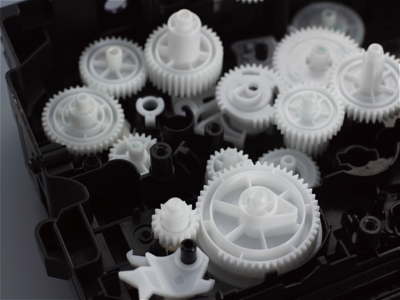Japan’s Polyplastics (based out of Farmington Hills, MI in the US) is reporting strong global demand for its high sliding grades of Duracon polyacetal (POM; polyoxymethylene) resin which are based on the company’s leading-edge noise reduction technology. These materials are specially designed for plastic gears and bearings for audio visual, office automation systems, home appliances, and automotive components.

Duracon POM commands about a 60% share of the Japanese POM resin market, and roughly 30% of the global market according to Polyplastics. Noise reduction grades account for approximately 6% of the total sales volume of Duracon POM.
Among crystallized resins, POM is used in the majority of gear applications instead of resins such as PA and PBT due to its superior strength and stiffness in a temperature range of 60°C to 80°C (140°F to 176°F), which is typical for office automation and automotive applications.
Polyplastics’ line of high sliding grades includes Duracon POM NW-02, an all-purpose material with both the advantages of polyethylene (PE) alloy type and non-alloy type grades. It is the highest-selling among the high sliding grades suitable for various conditions and applications and used in many industries including office automation and automotive.
Duracon POM SW-01 is an alloy type grade that is suitable for high-pressure sliding conditions. It has won success in the automotive industry for such components as bearings and cams whose requirements cannot be filled by conventional noise reduction grades. Duracon POM LW-02 is a non-alloy type grade which was recently developed to meet the more stringent requirements of office automation (OA) component and equipment manufacturers in the areas of wear, fatigue, and noise. LW-02 is suitable for OA gears whose mating materials are often unfilled resins such as acrylonitrile-butadiene-styrene (ABS) and high-impact polystyrene (HIPS). It is experiencing strong sales growth in the Japanese office automation market. Duracon POM JW-03 is a non-alloy type grade that was developed for improved gear dimensional accuracy.

 Industry News
Industry News